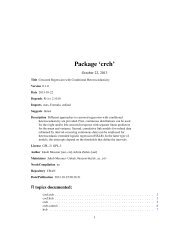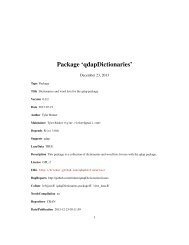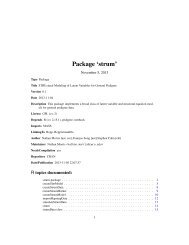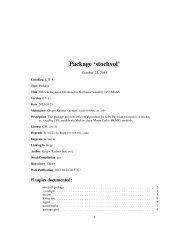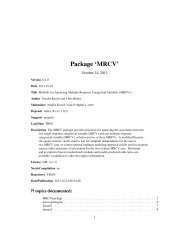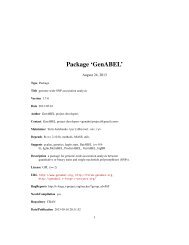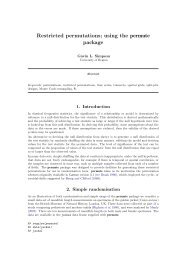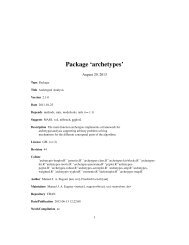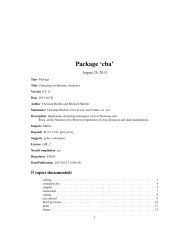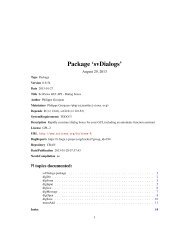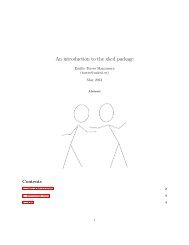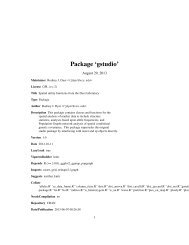Package 'samr'
Package 'samr'
Package 'samr'
You also want an ePaper? Increase the reach of your titles
YUMPU automatically turns print PDFs into web optimized ePapers that Google loves.
14 samr.assess.samplesize<br />
# here there is no outcome y; the desired eigengene is indicated by<br />
# the argument eigengene.numbe in the data object<br />
set.seed(32)<br />
x=matrix(rnorm(1000*9),ncol=9)<br />
mu=c(3,2,1,0,0,0,1,2,3)<br />
b=3*runif(100)+.5<br />
x[1:100,]=x[1:100,]+ b<br />
d=list(x=x,eigengene.number=1,<br />
geneid=as.character(1:nrow(x)),genenames=paste("gene", as.character(1:nrow(x))))<br />
samr.obj=samr(d, resp.type="Pattern discovery", nperms=50)<br />
samr.assess.samplesize<br />
Assess the sample size for a SAM analysis<br />
Description<br />
Usage<br />
Estimate the false discovery rate, false negative rate, power and type I error for a SAM analysis.<br />
Currently implemented only for two class (unpaired or paired), one-sample and survival problems).<br />
samr.assess.samplesize(samr.obj, data, dif, samplesize.factors=c(1,2,3,5),<br />
min.genes = 10, max.genes = nrow(data$x)/2)<br />
Arguments<br />
samr.obj Object returned from call to samr<br />
data Data list, same as that passed to samr.train<br />
dif Change in gene expression between groups 1 and 2, for genes that are differentially<br />
expressed. For log base 2 data, a value of 1 means a 2-fold change. For<br />
One-sample problems, dif is the number of units away from zero for differentially<br />
expressed genes. For survival data, dif is the numerator of the Cox score<br />
statistic (this info is provided in the output of samr).<br />
samplesize.factors<br />
Integer vector of length 4, indicating the sample sizes to be examined. The<br />
values are factors that multiply the original sample size. So the value 1 means a<br />
sample size of ncol(data$x), 2 means a sample size of ncol(data$x), etc.<br />
min.genes Minimum number of genes that are assumed to truly changed in the population<br />
max.genes Maximum number of genes that are assumed to truly changed in the population



